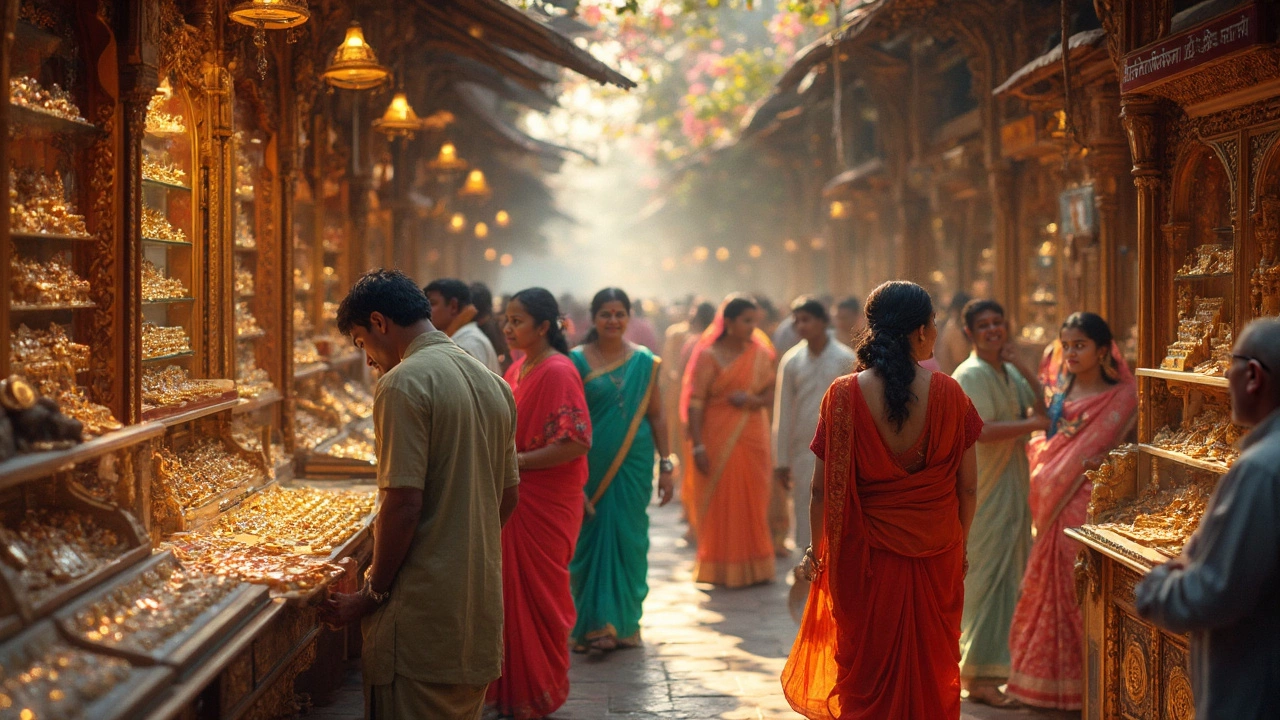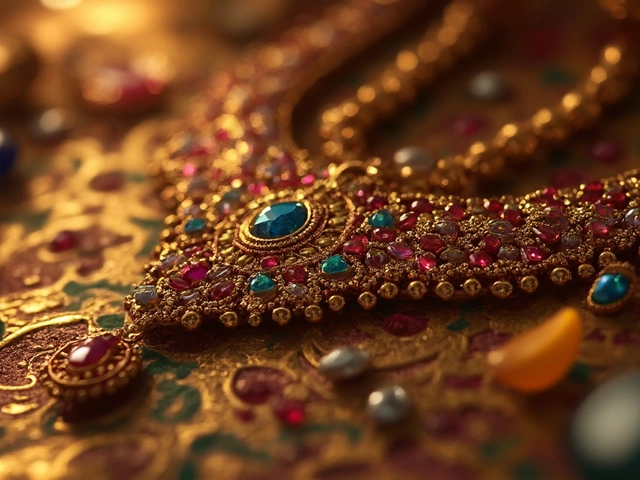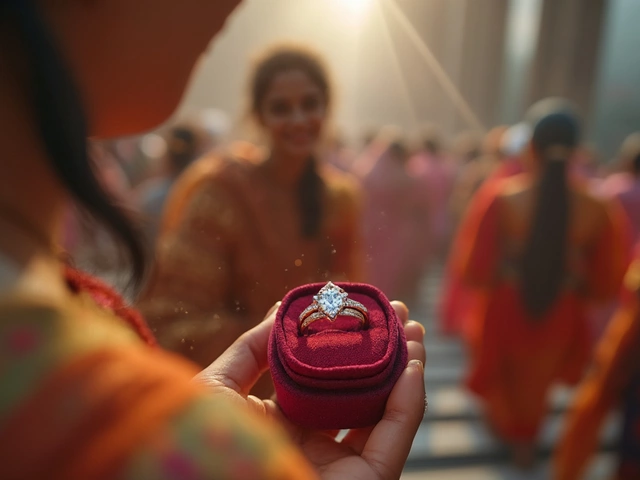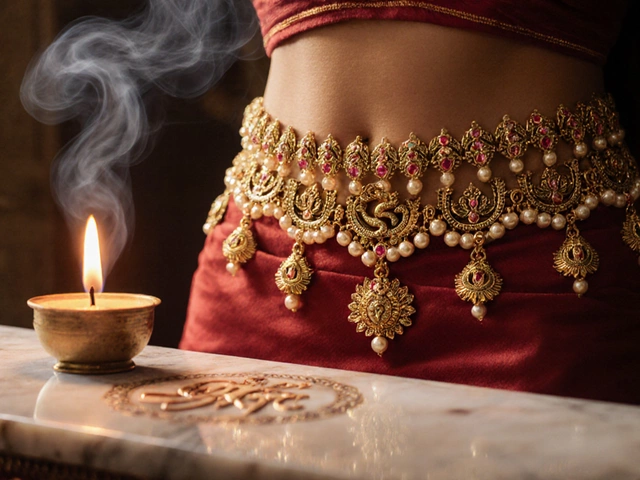
Diamonds cost less in India. It’s not just a rumor—people who shop here really do pay less than friends back home. Sounds great on paper, but why does this happen? What’s behind the prices, and are you really getting the same quality when you buy a diamond ring in Mumbai or Delhi?
First thing to know: India is the world's biggest spot for diamond cutting and polishing. Over 90% of tiny diamonds on global jewelry actually pass through Indian hands before they get to you. That means the supply chain is shorter and there’s less middleman markup inside the country.
Labor costs in India are much lower than in Europe or the U.S. Add that up across thousands of workers, and you see why a ring with a similar diamond costs a chunk less in India. This doesn’t always mean the diamonds are worse—just that making and selling them is cheaper.
But here’s a twist: not every cheap diamond is a bargain. Try comparing a ring at a flashy mall in Mumbai to one at a small family-run store in Surat, and you’ll spot the difference not just in price, but sometimes in quality too. So you’ve got to know what questions to ask and what to look for.
- India: The World’s Diamond Cutting Hub
- Low Labor Costs Make a Big Difference
- Diamond Quality: What You Need to Know
- Taxes, Import Duties, and Local Sourcing
- Shopping Tips for Buying Diamonds in India
- What to Watch Out For: Risks and Realities
India: The World’s Diamond Cutting Hub
If you’re shopping for diamond rings India, here’s something most people don’t realize: almost every small diamond you see in stores worldwide was actually cut and polished in India. Cities like Surat are legendary in the diamond business. More than 90% of the world’s cut diamonds move through Indian factories at some stage. Talk about a serious global player.
How did India get here? It actually started centuries ago. India’s got a long history with diamonds, being home to some of the earliest diamond mines. But what really changed the game was a massive boom in diamond processing. Now, India doesn’t just process diamonds for local shoppers—it has a worldwide reach, from budget jewelry to high-end engagement rings you’d see in New York or London.
| City | Role in Diamond Industry |
|---|---|
| Surat | Main hub for diamond cutting and polishing; handles 80%+ of the world's polished diamonds |
| Mumbai | Major trading and export center for diamonds; home to big jewelry markets |
| Jaipur | Specializes in colored stones and traditional jewelry art |
Thanks to this setup, there’s less need to ship diamonds across multiple countries before they reach Indian stores. That means lower overhead and more cheap diamonds India shoppers can access at local shops. Indian jewelers can price diamond rings India way lower than Western retailers who import each stone after it’s come halfway around the world.
So next time you see a sparkly diamond ring at a local shop, remember there’s a good chance it was cut just a few hours away. This local supply chain explains part of why diamond prices look so much better in the Indian market.
Low Labor Costs Make a Big Difference
Let’s get straight to it: the reason diamond rings in India cost way less than in other places often comes down to labor. India’s diamond industry employs about a million people, most of whom work in polishing, cutting, and jewelry crafting. Compared to Western countries, pay here is much lower, which means overhead for making that shiny stone into a ring is a lot less.
If you walk into a diamond workshop in Surat—the city famous for churning out over 80% of the world’s cut diamonds—you’ll see skilled workers shaping stones with precision. These are not quick jobs either. Some of these diamonds are cut and polished for hours by hand, sometimes using equipment that’s older than my dad’s favorite cricket bat. Because salaries here are modest by global standards, those costs don’t get added on top of the final price as heavily as they would elsewhere.
Here’s a snippet from De Beers, a global diamond giant:
“India’s advantage as a major center for diamond manufacturing stems from its large, skilled workforce and competitive labor costs, which allow the industry to process huge volumes at prices lower than many other countries.”
It’s not about cutting corners—there are strict quality checks, and some Indian workshops produce stones that end up in high-end stores in New York or Hong Kong. But if you’re buying diamond rings India is known for, what you’re mainly paying for is the stone and gold—not huge manufacturing costs or high sales commissions.
| Country | Average Monthly Wage (USD) | Diamond Cutting Labor Cost (per carat, USD) |
|---|---|---|
| India | $250 | $10 |
| Belgium | $2,500 | $150 |
| USA | $3,200 | $200 |
This table sums it up: cutting a diamond in India costs a fraction of what it does in places like Antwerp or New York. So when you see a low price tag, it’s not just marketing magic—it’s economics at work.
Diamond Quality: What You Need to Know
Everyone loves a deal on a shiny rock, but when it comes to diamond rings India, quality isn’t always obvious. In India, you’ll spot diamonds that look good at first glance but might not meet strict international grading. Don’t just fall for sparkle—understanding diamond quality is key.
The basics? It all comes down to the 4Cs: cut, color, clarity, and carat weight. Here’s the real scoop on what that means for you as a buyer in India:
- Cut: Indian jewelers often offer diamonds with decent cuts, but top global grades (like Excellent Cut) are less common in mass-market chains. A well-cut diamond reflects more light and looks much brighter, even if it’s not huge.
- Color: In India, you might find more ‘near colorless’ or even slightly yellow stones (graded G-H or below). Pure colorless is rare and pricier, but not always necessary unless you want bragging rights.
- Clarity: Small flaws, called inclusions, are pretty common. These might not bother most people but can affect value and price. Check clarity grading (VS, SI, etc.)—don’t just trust a salesperson’s word.
- Carat Weight: Carat affects price fast. Many cheap diamonds India are under 0.5 carats, which keeps costs low. If you see a bargain on a bigger stone, double-check the quality details first.
Now, you’ll come across diamonds with certificates from places like IGI or GIA. GIA-certified stones have tighter grading—sometimes Indian labs can be more generous with their grades. Always check which lab did the grading.
| Grading Feature | Common in India | Top International Standard |
|---|---|---|
| Cut | Very Good | Excellent |
| Color | G-J | D-F |
| Clarity | VS1-SI2 | IF-VVS2 |
| Certification | IGI, SGL | GIA |
Here’s a tip: if you want the best value, don’t chase perfection. Pick a diamond that looks clear without a microscope and shines bright, even if it’s not the top on paper. And never skip the certificate—if it’s missing, you should be suspicious, no matter how great the price seems.
Every time you shop for a diamond ring in India, balance quality and your budget. That’s how you win at this game and walk away with something that looks gorgeous and holds up over time.

Taxes, Import Duties, and Local Sourcing
One reason you see diamond rings India showing up for less on the price tag has to do with how the government taxes diamonds and where those rocks come from. Unlike many Western countries that slap high import duties on crafted jewelry or loose stones, India’s whole system is set up to help the local diamond scene thrive.
Rough diamonds get imported into India with relatively low duties. As of early 2025, India puts just 7.5% import duty on rough diamonds, a figure much lower than the rates you’ll find in places like China or the EU. Polished diamonds and finished jewelry see a 5% import duty, so locally cut and set stones avoid these costs altogether. This matters because Indian cutters process over 90% of the world's rough small diamonds, so there’s no need to pay those extra charges from outside.
Besides duties, there’s the Goods and Services Tax (GST). Jewelry buyers pay an extra 3% on diamond jewelry as GST—a lot less than luxury taxes elsewhere (for example, VAT in Europe can hit 20%). With most businesses in the diamond trade based out of major hubs like Surat and Mumbai, their product is both local and tax-friendly.
| Country | Import Duty (Rough Diamonds) | VAT/GST on Jewelry |
|---|---|---|
| India | 7.5% | 3% GST |
| China | 9% | 13% VAT |
| UK | Import duty varies | 20% VAT |
The final piece is local sourcing. You’re not paying for diamonds to travel halfway around the world, and that slashes down transportation and insurance costs. Almost every diamond rings India dealer is getting stones sourced, cut, and finished within the country. This is why buyers often notice a big price drop when shopping for diamonds in India instead of abroad.
If you want the best deal, stick to locally cut stones and check the tax details. That’s where the real savings hide.
Shopping Tips for Buying Diamonds in India
Walking into an Indian jewelry shop, you’re hit with row after row of sparkly choices. A little overwhelming, right? If you want to get the most out of buying diamond rings India, you need to know a few ground rules.
- Stick to certified diamonds. Reputable stores offer stones graded by labs like IGI, GIA, or SGL. Always ask for a certification card. If a jeweler hesitates, that’s a red flag.
- Bargaining is almost expected. Sticker prices usually aren’t set in stone. Most shopkeepers expect some haggling, so start by asking for a discount or a better rate—especially if you’re making a big purchase.
- Inspect the 4Cs yourself: cut, color, clarity, carat. These aren’t just buzzwords. Small changes—like F to G color or VS1 to VS2 clarity—can save you a lot of money with minimal difference to the eye.
- Don’t skip the details. Some stores melt making charges (that’s the cost of crafting the ring) into overall prices. Always ask for a breakdown of cost, especially if buying in a chain store or a famous bazaar.
- Compare prices at different shops. Don’t buy from the first place you see. Major jewelry markets like Zaveri Bazaar in Mumbai or Karol Bagh in Delhi are great for window shopping, price-checking, and finding deals.
- Check return and buyback policies. Life happens—sometimes you change your mind. Good shops have clear policies if you want to return or upgrade your diamond.
If you’re eyeing a big stone for a special occasion, watch for wedding season deals. Indian shops often run discounts or bundle offers between November and February.
Here’s something useful: The price you pay depends a lot on local gold prices too, since most diamond rings India have some gold in them. You can check live gold rates on most jewelry websites or even at the shop entrance.
| City | Average Discount Offered on Diamond Jewelry (%) |
|---|---|
| Mumbai | 10-18 |
| Delhi | 12-20 |
| Bangalore | 8-16 |
Don’t rush your decision. Take your time, ask plenty of questions, and don’t be afraid to walk away if something feels off. That’s how you actually score a deal you’ll love—and brag about later.
What to Watch Out For: Risks and Realities
So, diamonds seem cheap in India, but there’s no such thing as a free lunch. If you’re not careful, you can end up with a rock that isn’t worth what you paid. The Indian market for diamond rings India is a mixed bag—real deals sit next to duds, and some sellers count on you not knowing the difference.
Here are a few things you need to watch out for:
- Certification Issues: Not every jeweler offers reliable certificates. A diamond without trusted papers (from labs like GIA or IGI) can be risky. Fake or random certificates pop up here more often than people like to admit.
- Clarity Enhancements: Many diamonds here are treated to look better. These might look clear to your eyes but have treatments like laser drilling or fracture filling. Sellers don’t always mention these, and it affects resale value.
- Synthetic Diamonds: Lab-grown stones are common, and some shops don’t always tell you upfront that you’re getting one. These are cheaper, but people might try to pass them off as natural and pocket the price difference.
- Return & Exchange Policies: Policies can be loose or missing altogether, especially at smaller shops or roadside stalls. Once you pay, getting your money back can be nearly impossible.
- Pricing Transparency: Bargaining is part of the culture, but it also means prices aren’t always straightforward. The price tag might be high just so you feel good about negotiating it down, but you’re still paying more than you should.
Take a look at the difference certification makes:
| Diamond Feature | Certified (GIA/IGI) | Non-Certified |
|---|---|---|
| Resale Value | High | Low |
| Buyer Confidence | Strong | Uncertain |
| Risk of Being Fooled | Low | High |
And don’t forget about fake stones—they exist. Some scammers will try to pass off cubic zirconia or moissanite as real diamonds. Ask for a tester or have your new purchase checked at an independent gem lab if you’re unsure.
Long story short, when shopping for cheap diamonds India, spend as much time checking the seller as you do admiring the ring. Ask for real certificates, know the difference between natural and lab-grown stones, and don’t be afraid to walk away if a deal feels sketchy. The thrill of a bargain is great—but only when you actually get what you pay for.








